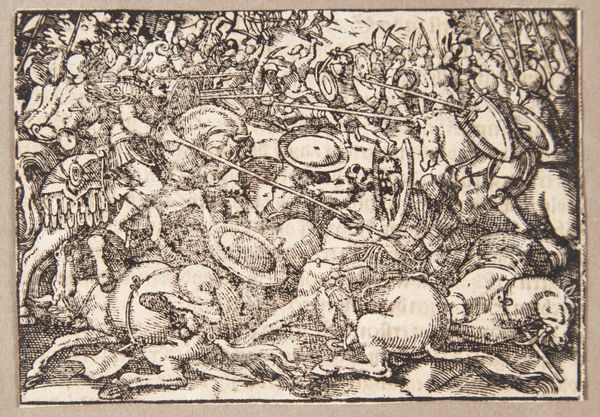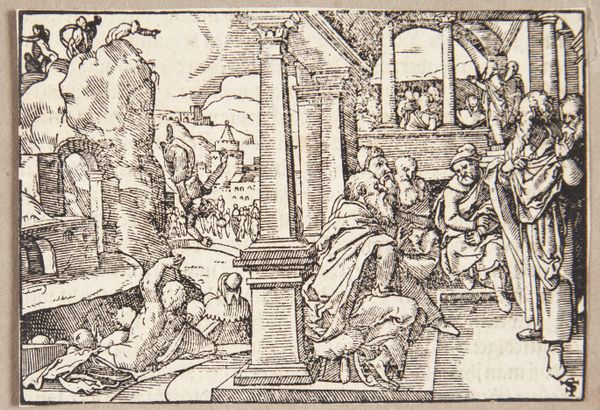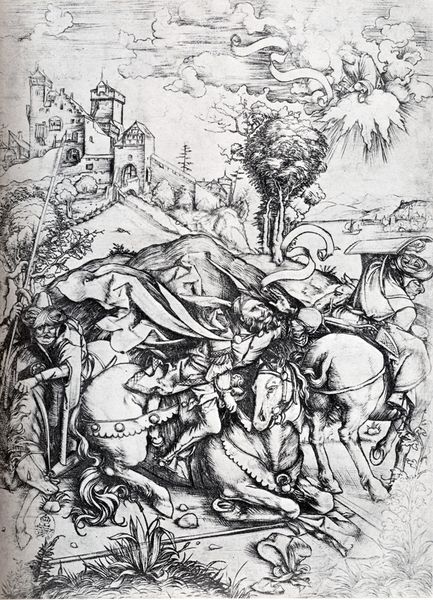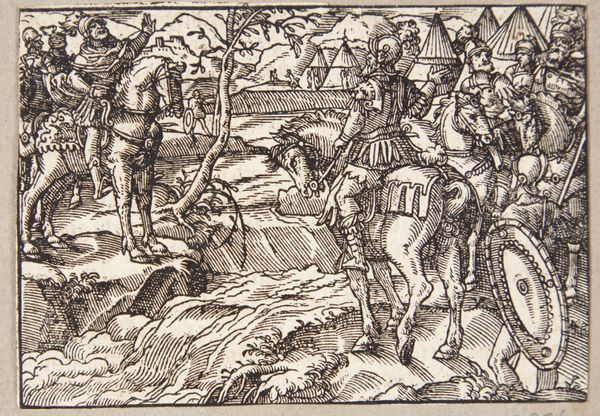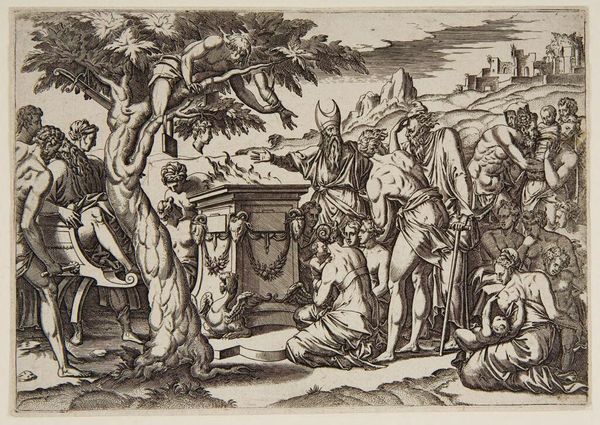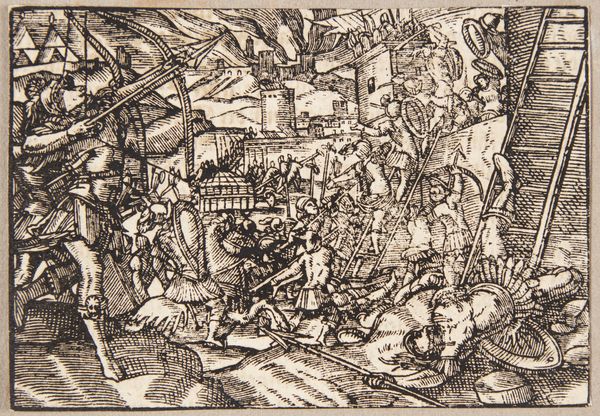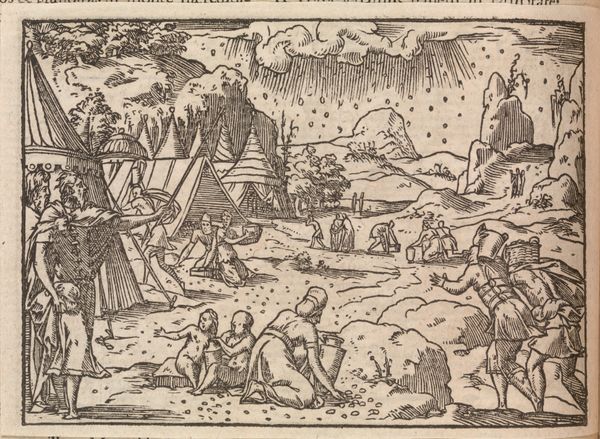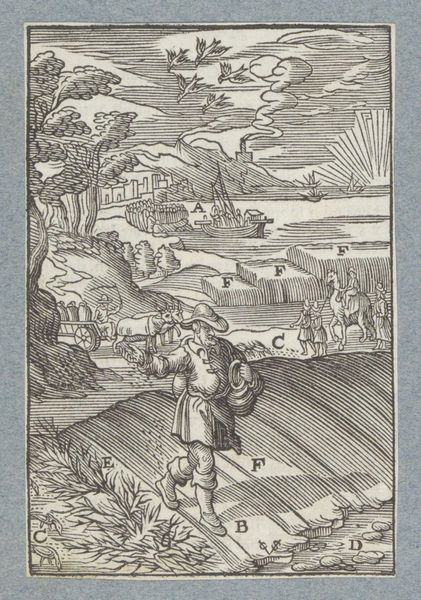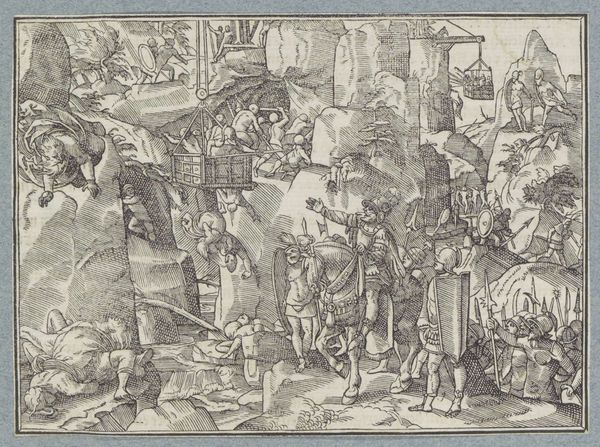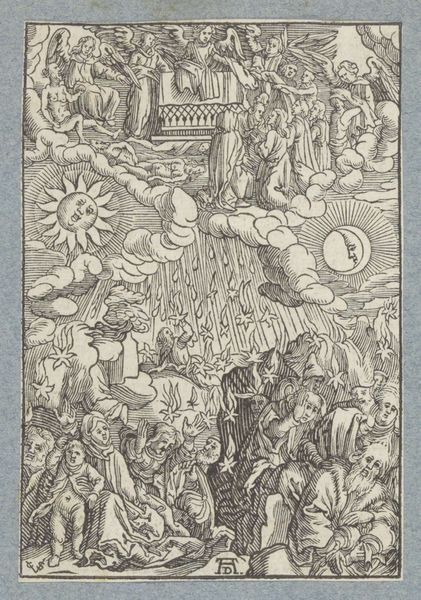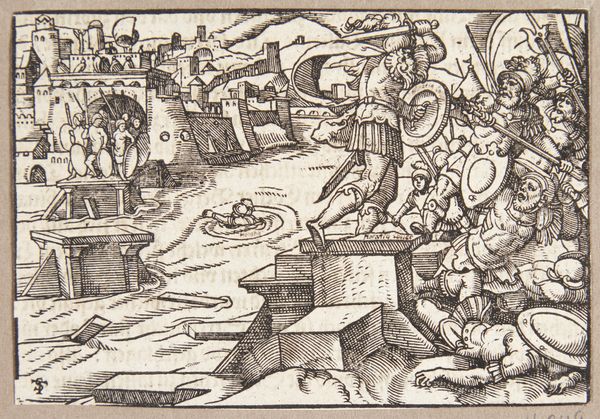
print, woodcut, engraving
#
medieval
#
narrative-art
# print
#
figuration
#
woodcut
#
line
#
pen work
#
history-painting
#
engraving
Dimensions: 75 mm (height) x 105 mm (width) (bladmaal)
Editor: We are looking at "Romulus' Death," a woodcut engraving made in 1574 by Tobias Stimmer. The scene is intense! You have figures in classical armour mid-battle, all rendered in incredibly fine lines. It’s brutal, like a newspaper report from that era. What stands out to you most about this piece? Curator: The "newspaper report" feel is very insightful. It's tempting to get lost in the linear style, typical of the period, but look at where it was placed: Books! Prints like this were a primary way news and political ideas were disseminated to a wider audience. What effect does this have? How might such imagery of this nature affect societal viewpoints? Editor: I never thought about it that way. Because it was a printed media, maybe they used these images to paint specific historical narratives for consumption by everyday people. The image then served as propaganda of sorts, as a tool for influencing opinions and solidifying power? Curator: Precisely! These images could influence and reinforce views on leadership, social order, and even morality. Now consider Romulus: Founding a city is a political act; his death is a deeply symbolic event that had huge impact on the socio-political world of that time, and this picture, meant to spread news, carried that political weight to the people. Editor: So, Stimmer's woodcut isn't just depicting a scene, but also participating in a broader dialogue about power, history, and the function of imagery? I will never see prints in the same way! Curator: Indeed! Understanding its context reveals its dynamic role. A stark reminder that images are always active participants in the social world.
Comments
No comments
Be the first to comment and join the conversation on the ultimate creative platform.
